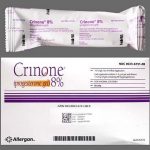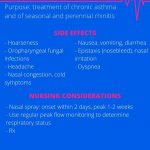
Contents
Types of Migraine Headache Medications
Medications for migraine relief include NSAIDs, tricyclic antidepressants, calcitonin gene-related peptide (CGRP) inhibitors, botulinum toxin type A (Botox), ergot alkaloids, triptans, antinausea medications, and other pain relievers.
Migraine medications treat migraine headaches and associated symptoms. They do not cure migraines but provide relief and reduce the frequency and intensity of the migraines.
Some migraine medications are available over the counter, but most require a prescription.
What are migraine headaches?
Migraine is a neurovascular disorder characterized by physiological changes in the brain that cause intense, debilitating headaches lasting from several hours to days. The cause of migraine is not fully understood. Migraines are often hereditary, and most sufferers are women. In some women, migraines may be triggered by hormone fluctuations during the menstrual cycle.
Research suggests that migraine pain may be initiated by overactive nerve cells (neurons) triggering the trigeminal nerve, which provides sensation to the head and face. This leads to an imbalance in certain neurotransmitters in the brain, resulting in a migraine headache.
The two neurotransmitters involved in migraines are:
- Serotonin: A hormone that plays roles in mood regulation, sleep, and digestion. Serotonin constricts blood vessels, and a sudden fall in serotonin levels at the start of a migraine causes blood vessels in the brain to swell, resulting in inflammation and pain.
- Calcitonin gene-related peptide (CGRP): CGRP is a small protein involved in transmitting pain signals. CGRP is released by the trigeminal nerve during a migraine headache.
In some people, migraine headaches may be preceded by warning signs called auras, which can include flashing lights, transient blindness, weakness, or numbness on one side of the body. Migraine headaches may be triggered by factors such as hormone fluctuations, certain foods or drinks, and stress.
- Throbbing or pounding pain, usually on one side of the head
- Nausea and/or vomiting
- Sensitivity to sound, light, and/or smells
- Visual disturbances and eye pain
What are the different types of migraine medications?
Migraine medications fall into two major types: abortive medications and preventive medications.
Abortive medications relieve the symptoms of acute migraines. They should be taken at the first sign of a migraine attack. Acute migraine attacks that are not relieved by abortive therapy and last longer than 72 hours should be treated in the emergency department.
Types of abortive medications include:
- Non-steroidal anti-inflammatory drugs (NSAIDs)
- Ergot alkaloids
- Triptans (serotonin receptor agonists)
- Ditans
- CGRP antagonists
- Antinausea medications
- Other pain relievers
Preventive medications
Preventive medications are taken daily by people with chronic migraines, defined as having 15 or more migraine headaches in a month. They reduce the frequency and severity of migraines but may take up to six months to have full effects.
Most preventive medications were not developed specifically for migraines but have been found effective in treating them. Women who have menstrual migraines may also respond to hormone therapy in addition to preventive or abortive therapy.
The American Headache Society and the American Academy of Neurology recommend the following types of medications for treating chronic migraine:
- NSAIDs
- Tricyclic antidepressants
- Selective serotonin reuptake inhibitor (SSRI) antidepressants
- Serotonin-norepinephrine reuptake inhibitor (SNRI) antidepressants
- High blood pressure medications (antihypertensives)
- Anticonvulsants
- CGRP inhibitors
- Botulinum toxin type A
QUESTION
How do abortive migraine medications work?
NSAIDs
NSAIDs block the production of chemicals that cause inflammation and pain. They relieve pain but do not address the underlying changes in the brain that cause migraines. These medications are often available over the counter. Some NSAIDs commonly used for migraines include:
- Aspirin
- Ibuprofen (Advil, Motrin) – dosages of 400 mg and above require a prescription
- Acetaminophen, paracetamol (Tylenol)
- Naproxen sodium (Aleve, Anaprox DS [prescription] and Naprosyn [prescription])
- Combination of aspirin, acetaminophen, caffeine (Excedrin migraine)
Ergot alkaloids
- Ergot alkaloids provide pain relief by constricting blood vessels. Examples include:
- Ergotamine tartrate (Ergomar sublingual tablet)
- Dihydroergotamine mesylate (D.H.E. 45 injection, Migranal nasal spray)
- Ergotamine tartrate/caffeine (Cafergot)
Triptans
Triptans are serotonin receptor agonists that increase serotonin activity. They constrict blood vessels, reduce inflammation, and relieve pain. Examples of triptans include:
- Sumatriptan succinate (Imitrex, Zembrace, Onzetra inhaled, Tosymra nasal spray)
- Sumatriptan/naproxen (Treximet)
- Zolmitriptan (Zomig)
- Rizatriptan benzoate (Maxalt)
- Naratriptan hydrochloride (Amerge)
- Almotriptan malate
- Frovatriptan succinate (Frova)
- Eletriptan hydrobromide (Relpax)
Ditans
Ditans are a new type of medication for acute migraines. They also work on serotonin receptors but bind to a specific subtype that blocks the release of CGRP by the trigeminal nerve. Ditans may be a better option for people with cardiovascular disease because they do not constrict blood vessels. The FDA-approved ditan is:
- Lasmiditan succinate (Reyvow)
- CGRP antagonists
- Calcitonin gene-related peptide antagonists work by preventing CGRP from transmitting pain signals. Examples of CGRP antagonists include:
- Rimegepant sulfate (Nurtec ODT)
- Ubrogepant (Ubrelvy)
Antinausea medications
Antinausea medications relieve nausea and vomiting caused by migraines. These symptoms may be relieved with migraine medications, but for some people, they may be severe enough to prevent them from taking migraine medications.
Antinausea medications are available in various forms, including injections, tablets, capsules, syrup, and rectal suppositories for those who cannot take them orally.
Examples of antinausea medications for migraines include:
- Promethazine hydrochloride
- Chlorpromazine hydrochloride
- Prochlorperazine (Compro)
- Trimethobenzamide hydrochloride (Tigan)
- Metoclopramide hydrochloride (Reglan)
Other pain relievers
- Barbiturates (sedatives) may be prescribed in combination with an NSAID, with or without an opioid. A commonly used barbiturate combination for migraines is:
- Butalbital/acetaminophen/caffeine with or without codeine (opioid)
- Opioids are more potent painkillers but are rarely prescribed due to the high risk of addiction.


